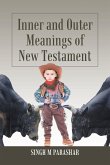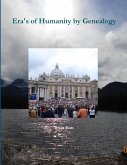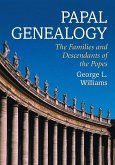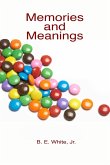This book is a refreshingly unique approach to genealogy and its relationships with Science and Religion. It is the author?s answer to the questions posed artistically by the painter Paul Gauguin?s masterpiece; ?Where Do We Come From? What Are We Made Of? Where Are We Going?, as reproduced on the book cover. Most religions and cultures make important reference to their genealogies. Science, also, since the advent of Darwin?s Theory of Evolution and its subsequent development and culmination in DNA and brain science research, has its own genealogy, telling the story of the pre-history and history of mankind, our migrations and the evolution of our behavior and cultures. The author, trained as both a biologist and lawyer, writing as an independent scholar, examines these questions through the various lenses of genealogy, biology, evidence, religion and philosophy. He considers, first: some basic but little known facts of genealogy; then our common mortality and heritage and brother/sisterhood with all mankind; then the variety of world-views; then the different evidentiary bases for science and religion; then a condensed, but comprehensive view of comparative religion and humanism; then the history of Biblical interpretation and Biblical genealogies; and, finally, the history of mankind as seen by science, including the remarkable recent discoveries of prehistoric man, and brain science. The poetry/prose metaphor is illustrated by insightful examples of both poetry and prose, and brief introductions to some remarkable religious and scientific personalities. The dark side of religion is explored, with contemporary critiques by renowned scholars, and some exemplary poets are referred to with examples of their poetry. This book avoids the combative rhetoric of both religious and scientific extremists, and points the way toward and enriching language and life of religious humanism. This ?new dualism? of poetry and prose reflects the biological facts of our simultaneously emotional and rational selves. Thus, religious humanism provides a natural bridge between religion and science, accessible to everyone. The poetry/prose metaphor can provide a thoughtful rationale for people to keep their religious beliefs and traditions, make peace between religions and also understand and appreciate the modern scientific world without conflict. Thus, genealogy has taken us on a long journey through the history of science and religion, illustrating the mysteries, complexities, and beauties of humanity?s existence. The book is well researched and written clearly in an engaging style, with an extensive bibliography. It will be well worth reading by all people who have an interest in genealogy and its relationships with science and religion.
Hinweis: Dieser Artikel kann nur an eine deutsche Lieferadresse ausgeliefert werden.
Hinweis: Dieser Artikel kann nur an eine deutsche Lieferadresse ausgeliefert werden.


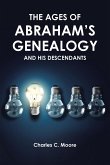

![Alchemy Ethical Muslim Stories Muslims Internal Conversations for Everyone Who Values the Deeper Meanings [Teenage Audience Adaptation] Alchemy Ethical Muslim Stories Muslims Internal Conversations for Everyone Who Values the Deeper Meanings [Teenage Audience Adaptation]](https://bilder.buecher.de/produkte/61/61936/61936025m.jpg)
